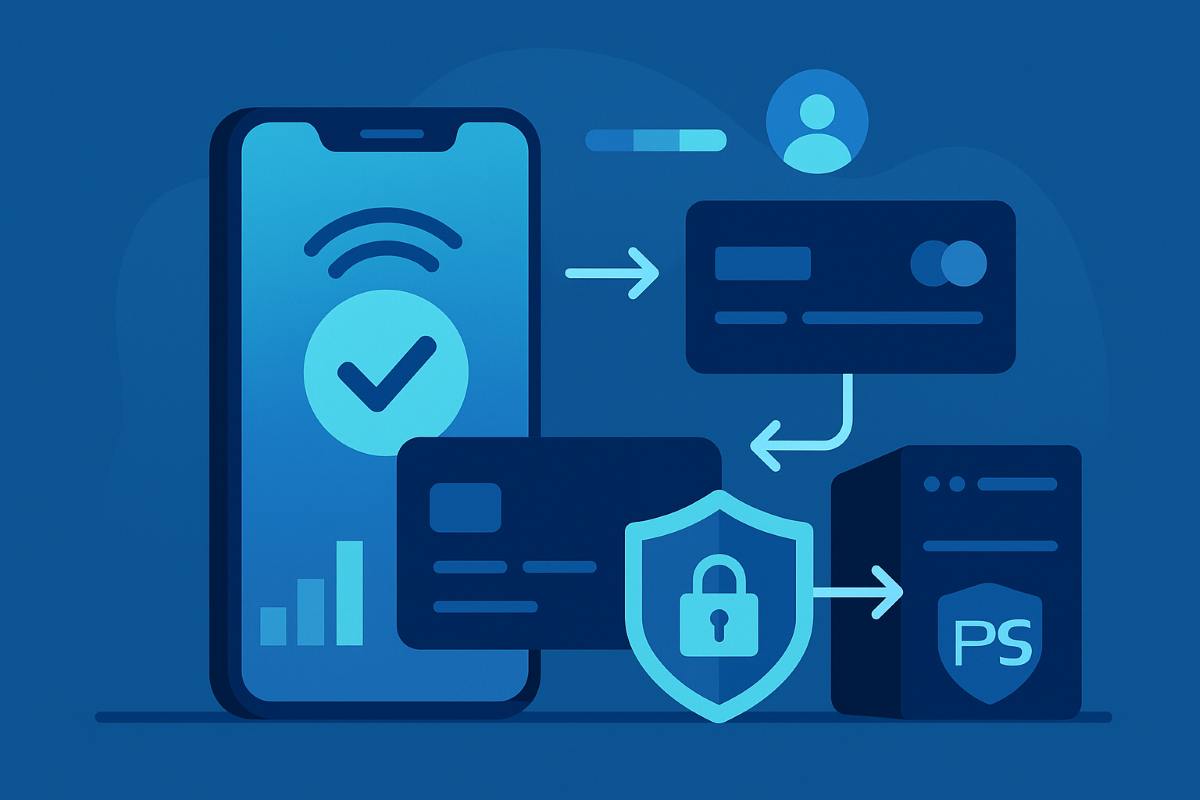The rapid advancements in financial technologies are reshaping every stage of the customer experience. Evolving digital expectations of users demand systems that go beyond traditional banking—requiring infrastructure that is flexible, fast, and secure.
In this new landscape, mobile payment systems, data security standards, the right payment gateway selection, and streamlined user interfaces form the foundational pillars of a successful fintech infrastructure.
Customer loyalty is shaped not only by the functionality of a service but also by how that service is delivered—its speed, security, and accessibility. Therefore, every touchpoint that fintech companies establish with users plays a critical role in defining brand reputation and long-term success.
Accessibility from Anywhere with Mobile Payments
Mobile devices have become the primary tools for both individuals and businesses to conduct banking and payment transactions. Mobile payment systems allow users to complete transactions using QR codes or contactless technologies—without having to re-enter credit card information each time. This convenience is among the most important elements that enhance customer experience.
In a fintech infrastructure, mobile payment is not just an additional feature; it is an indispensable standard for speed, accessibility, and customer satisfaction. The widespread adoption of mobile payments—particularly in subscription-based services, digital wallet applications, and retail systems—enables purchases to be completed more quickly and seamlessly.
Systems that offer in-app payment capabilities allow users to complete transactions without being redirected to other platforms. This keeps users on the site longer and significantly improves conversion rates.
Maximum Security with PCI DSS Compliance
Security is one of the most fundamental expectations of users in digital environments. To prevent the misuse of personal data, card information, and session details during payment transactions, infrastructures that comply with international standards must be employed. At this point, PCI DSS (Payment Card Industry Data Security Standard) compliance serves as proof that the system is designed according to global security benchmarks.
For fintech companies, PCI DSS compliance is not merely a certification. It also requires the encryption of customer data, logging of transaction histories, restriction of access rights, and constant monitoring for cyber threats. Gaining customer trust is the most solid foundation for building loyalty in the long term. Therefore, payment platforms should be structured and regularly audited according to these international standards—not just for functionality but also for security.
Payment Gateway Selection: A Strategic Decision
For a fintech venture, choosing a payment gateway is far more than a technical decision. The right gateway directly impacts the quality of the user experience—reducing transaction failure rates, enhancing security, and increasing customer satisfaction. Therefore, the selected gateway must offer both technological proficiency and sectoral flexibility.
An ideal payment gateway should support multiple currencies, integrate seamlessly with mobile applications, offer 3D Secure protection for transactions, and be compatible with various payment methods. Additionally, advanced features such as currency-based pricing, flexible commission structures, and routing based on error codes increase the system’s overall functionality.
Some payment gateways may slow down or reject transactions under heavy loads, whereas advanced solutions have the ability to distribute the load and reroute transactions to different providers. This routing capacity is critical for ensuring a seamless user experience.
The Power of Interaction Through a User-Friendly Interface
As important as the technology itself is the user interface. Since the payment screen is often the first and primary point of contact with the customer, it must offer a clean, fast, intuitive, and well-guided design. A complicated or confusing interface can interrupt the payment process and cause users to abandon the platform before completing their transaction.
A user-friendly interface is not just about visual simplicity—it also involves functional depth. Features that cater to user habits—such as one-click payment, card storage, and using saved data for transactions—enrich the user experience. Moreover, a responsive design fully compatible with mobile devices ensures a consistent user experience across all screen sizes.
Advanced fintech infrastructures continuously update their interfaces by analyzing user feedback. This cyclical development approach increases both transaction success rates and customer satisfaction.
Measuring and Optimizing the Customer Experience
Modern fintech systems must go beyond merely processing transactions—they must also include tools to measure the experience. Metrics such as where users abandon the payment flow, at which step the transaction is dropped, and which devices and browsers are used more frequently form the basis for strategic decision-making.
Through analytics and reporting tools, user behavior can be tracked, A/B testing can be applied to compare interfaces, and conversion rates can be optimized. The more accurately user behavior is analyzed, the more precisely the payment experience can be tailored to expectations.
Investing in the Future with Experience-Centered Payment Infrastructure
Success in the fintech sector is not only about developing technology—it’s about delivering that technology as a value-driven experience for users.
The accessibility offered by mobile payment infrastructure, the security assurance provided by PCI DSS compliance, the efficiency gained through selecting the right payment gateway, and the engagement enabled by user-friendly interfaces are all non-negotiable components of this journey.
Fintech solutions that offer fast, seamless, and secure payment experiences aligned with user habits stand out in the market and build loyal customer bases. Therefore, every step from infrastructure selection to interface design must be carefully planned, with customer experience always placed at the core.
In the near future, competition in the fintech world will be shaped not only by price or product variety, but by the quality of the experience offered. Brands that possess reliable, mobile-compatible, and user-friendly payment systems based on solid foundations will be the ones that succeed in shaping the future—starting today.
Success in Fintech Begins with Experience: Stand Out with the Right Payment Infrastructure
As the fintech sector continues to grow and evolve, the focus of competition has shifted from mere technological capability to the quality of digital relationships formed with customers. At the heart of that relationship lies the payment experience offered to the user.
Mobile payment systems, full compliance with security standards, choosing the right payment gateway, and simplified user interfaces all come into play. These elements shape not only your technical infrastructure but also how your brand is perceived by users.
Today’s customer prefers fast, seamless, and secure solutions. The widespread use of mobile transactions has made mobile payment infrastructure not just a supplementary feature, but the backbone of fintech systems. These infrastructures transform the payment process from a technical function into an emotional experience—because users remain loyal to systems that allow them to transact quickly, securely, and without friction.
However, speed and accessibility alone are not enough. Meeting international security standards such as PCI DSS compliance is not just a legal obligation but also a necessity for building customer trust. Every customer who uses their credit card for a transaction wants to be assured that the system is protecting them. Providing this assurance is not just a technology investment—it is a matter of reputation management.
In addition, selecting the right payment gateway is a strategic decision on any digital payment journey. A poorly chosen gateway can increase transaction failures, result in customer loss, and harm your brand perception. The right gateway, on the other hand, shortens transaction times, diversifies payment methods, and increases customer satisfaction—all of which directly impact sales performance.
Sustainable success in fintech will belong to those who can unite technology, security, and experience. At this point, standing out is not only about receiving payments but also about offering customers a comfortable, secure, and seamless digital journey.


Leave A Comment